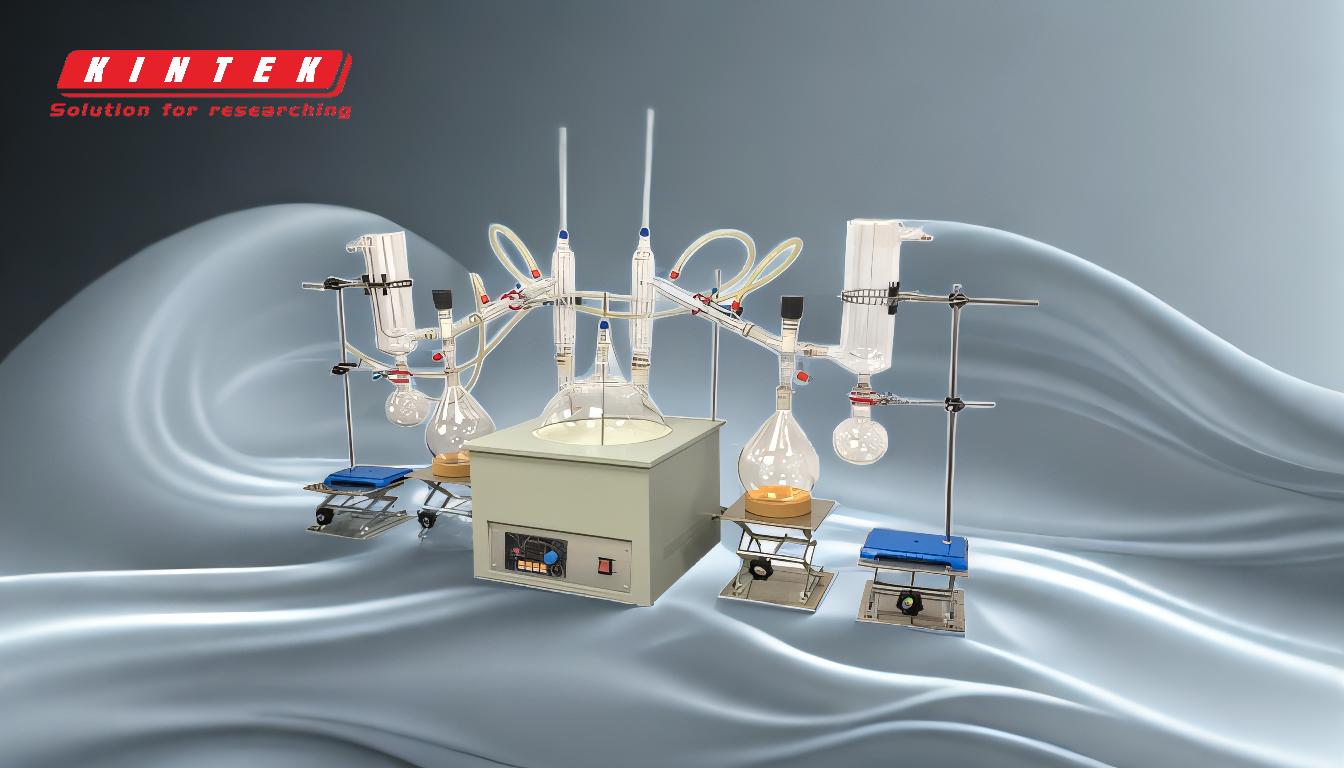Distillation efficiency is a critical factor in processes like rotary evaporation, fractional distillation, and molecular distillation. To increase efficiency, it is essential to optimize key parameters such as vacuum degree, temperature control, cooling mechanisms, and equipment quality. A higher vacuum degree, lower cooling water temperature, and precise heat pot temperature can significantly enhance evaporation rates. Additionally, the choice of materials, such as PTFE sealing rings, ensures better wear and corrosion resistance, improving system tightness and longevity. The type of distillation method—fractional or molecular—should also be selected based on the specific application and product requirements. By addressing these factors, distillation efficiency can be maximized, enabling faster processing of larger sample sizes.
Key Points Explained:

-
Optimize Vacuum Degree:
- The vacuum degree is a crucial factor in distillation efficiency. A higher vacuum reduces the boiling point of the solvent, allowing for faster evaporation at lower temperatures.
- The vacuum pump's power and the system's tightness directly influence the vacuum degree. High-quality vacuum pumps and tight seals (e.g., PTFE sealing rings) ensure consistent and efficient operation.
- Balancing the vacuum value with the equipment's pressure resistance is essential to avoid damage while maximizing efficiency.
-
Control Temperature Parameters:
- Heat Pot Temperature: The temperature of the heat pot must be precisely controlled to provide sufficient energy for evaporation without overheating the sample.
- Cooling Water Temperature: Lower cooling water temperatures improve condensation efficiency, ensuring that evaporated solvents are quickly condensed and collected.
- Proper temperature control minimizes energy loss and enhances the overall distillation process.
-
Select Appropriate Distillation Method:
- Fractional Distillation: Ideal for separating liquids with close boiling points, fractional distillation relies on multiple evaporation-condensation cycles to achieve high purity.
- Molecular Distillation: Best suited for purifying and concentrating heat-sensitive natural products under low vacuum pressure, molecular distillation minimizes thermal degradation.
- The choice between these methods depends on the specific product and process requirements, as neither method is universally superior.
-
Use High-Quality Equipment and Materials:
- Vacuum Pump: A powerful and reliable vacuum pump ensures consistent vacuum levels, directly impacting distillation speed and efficiency.
- Sealing Rings and Tubes: Materials like PTFE offer superior wear and corrosion resistance compared to rubber, ensuring long-term system tightness and reducing maintenance needs.
- Evaporation Bottle Speed: Adjusting the rotation speed of the evaporation bottle can improve heat transfer and evaporation rates, especially for viscous samples.
-
Maximize System Tightness:
- A leak-free system is essential for maintaining a high vacuum degree. Regular inspection and maintenance of seals, gaskets, and tubing prevent air ingress, which can compromise efficiency.
- Using high-quality components and ensuring proper assembly minimizes the risk of leaks and improves overall performance.
-
Consider Sample Size and Processing Needs:
- Higher distillation efficiency allows for processing larger sample sizes in a shorter time, which is particularly beneficial for high-throughput laboratories.
- Optimizing all parameters ensures that the system can handle increased workloads without sacrificing quality or efficiency.
By addressing these key points, distillation efficiency can be significantly improved, leading to faster processing times, higher sample throughput, and better product quality.
Summary Table:
| Key Factor | Optimization Tips |
|---|---|
| Vacuum Degree | Use high-quality vacuum pumps and PTFE seals to maintain consistent vacuum levels. |
| Temperature Control | Precise heat pot and low cooling water temperatures enhance evaporation and condensation. |
| Distillation Method | Choose fractional or molecular distillation based on product and process requirements. |
| Equipment Quality | Invest in durable materials like PTFE for sealing rings and tubes to reduce wear. |
| System Tightness | Regularly inspect and maintain seals to prevent leaks and ensure high vacuum levels. |
| **Sample Size & Throughput | Optimize parameters to handle larger sample sizes efficiently for high-throughput labs. |
Ready to enhance your distillation efficiency? Contact our experts today for tailored solutions!










